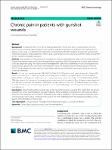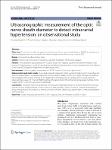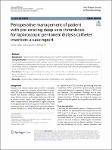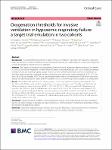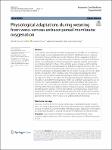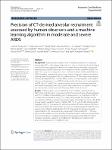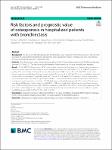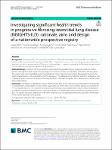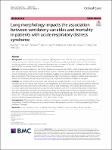Search
Author
- Osman, Ahmed I. (5)
- Daqing, Ma (3)
- Jorgensen, Ed (3)
- Li, Yan (3)
- next >
Subject
- kinh tế (26)
- Economics (12)
- programming (10)
- XRD (10)
- next >
Date issued
- 2020 - 2025 (2129)
- 2010 - 2019 (129)
- 2000 - 2009 (9)
- 1999 - 1999 (1)
Has File(s)
Search Results
In civilian life, from 11 to 40% of patients suffer from chronic pain after receiving injuries. There are almost no data on chronic pain in patients with gunshot wounds, isolated clinical cases have been published. The purpose of our study is to determine the factors that can potentially affect the results of treatment of such patients, namely the frequency of development of chronic pain, acute stress reactions, satisfaction with the results of treatment and the number of wound localizations. |
To evaluate the ultrasonographic measurement of optic nerve sheath diameter (ONSD) as a predictor of intracranial hypertension as compared to the invasive measurement of intracranial pressure (ICP). |
Patients with chronic kidney disease (CKD) commonly present for surgery for a number of indications. Patients with CKD may have multiple pre-existing comorbid conditions like diabetes mellitus, hypertension, coronary artery disease, anemia, and platelet dysfunction. The risk of adverse cardiac events, renal compromise, and anesthetic complications in these patients is higher compared to the general population (Craig and Hunter 2008). |
Over the last 5 years, viral induced acute respiratory distress syndrome (ARDS) has emerged as a major risk factor for invasive fungal infections in ICU patients worldwide [1, 2]. Pulmonary aspergillosis, being reported in 15–27% of critical COVID-19 patients [2, 3] and in nearly 20% of Influenza associated ARDS patients [1], appears to be the main fungal infection involved. |
The optimal thresholds for the initiation of invasive ventilation in patients with hypoxemic respiratory failure are unknown. Using the saturation-to-inspired oxygen ratio (SF), we compared lower versus higher hypoxemia severity thresholds for initiating invasive ventilation. |
Veno-venous extracorporeal membrane oxygenation (V–V ECMO) has an established evidence base in acute respiratory distress syndrome (ARDS) and has seen exponential growth in its use over the past decades. However, there is a paucity of evidence regarding the approach to weaning, with variation of practice and outcomes between centres. Preconditions for weaning, management of patients’ sedation and mechanical ventilation during this phase, criteria defining success or failure, and the optimal duration of a trial prior to decannulation are all debated subjects. Moreover, there is no prospective evidence demonstrating the superiority of weaning the sweep gas flow (SGF), the extracorporeal blood flow (ECBF) or the fraction of oxygen of the SGF (FdO2), thereby a broad inter-centre variabi... |
Assessing measurement error in alveolar recruitment on computed tomography (CT) is of paramount importance to select a reliable threshold identifying patients with high potential for alveolar recruitment and to rationalize positive end-expiratory pressure (PEEP) setting in acute respiratory distress syndrome (ARDS). The aim of this study was to assess both intra- and inter-observer smallest real difference (SRD) exceeding measurement error of recruitment using both human and machine learning-made lung segmentation (i.e., delineation) on CT. This single-center observational study was performed on adult ARDS patients. CT were acquired at end-expiration and end-inspiration at the PEEP level selected by clinicians, and at end-expiration at PEEP 5 and 15 cmH2O. |
The risk factors for osteoporosis and its prognostic value in patients with bronchiectasis is not well characterized. We explored the risk factors for osteoporosis and its prognostic impact in hospitalized non-cystic fibrosis bronchiectasis (NCFB) patients in Southeast China. |
The progressive course of pulmonary fibrosis (PPF) is observed with variable prevalence in different entities of fibrosing interstitial lung disease (fILD). PPF is characterised by worsening respiratory symptoms, declining lung function and increasing extent of fibrosis on high-resolution computer tomography. In Germany, data are limited on the characteristics and management of such patients. |
Acute respiratory distress syndrome (ARDS) patients with different lung morphology have distinct pulmonary mechanical dysfunction and outcomes. Whether lung morphology impacts the association between ventilatory variables and mortality remains unclear. Moreover, the impact of a novel combined ventilator variable [(4×DP) + RR] on morality in ARDS patients needs external validation. |

